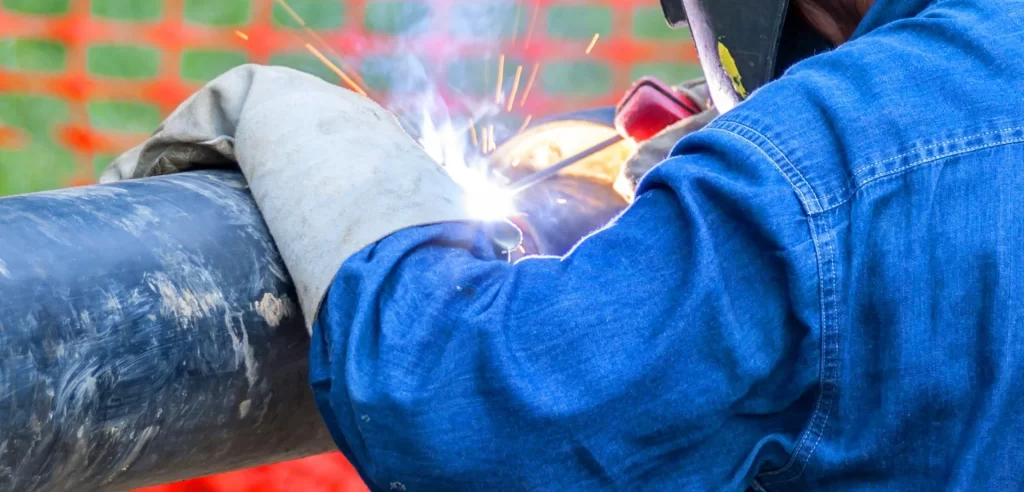Boost Welding Performance: Purchase Trusted Inspection Service
Boost Welding Performance: Purchase Trusted Inspection Service
Blog Article
Unveiling the Diverse Series Of Welding Services and Their Benefits
As sectors continue to advance and demand precision in their manufacturing processes, the value of welding solutions has actually become significantly pronounced. From the convenience of arc welding to the effectiveness of MIG welding, and the complex work achieved with TIG welding to the accuracy of laser welding, the array of welding techniques available is huge. Each technique brings its very own collection of applications and advantages, catering to a vast array of needs across various industries. Understanding these varied welding solutions and their benefits can offer important insights right into optimizing fabrication procedures and attaining superior results.
Types of Welding Services
Amongst the various kinds of welding solutions readily available, each offers one-of-a-kind advantages and applications in different sectors. One usual type is MIG welding, additionally recognized as Gas Steel Arc Welding (GMAW), which utilizes a wire electrode to join steels with each other. MIG welding is valued for its rate and convenience, making it suitable for a large range of products consisting of light weight aluminum, steel, and stainless steel. An additional widely utilized technique is TIG welding, or Gas Tungsten Arc Welding (GTAW), which makes use of a non-consumable tungsten electrode to create a clean and accurate weld. TIG welding is favored for its capacity to produce high-grade welds in slim products, making it suitable for markets such as aerospace and automobile.
In addition, there is Stick welding, or Secured Metal Arc Welding (SMAW), which is known for its simplicity and performance, specifically in gusty or outdoor conditions. This technique is frequently utilized in building and pipe welding. Finally, there is Flux-Cored Arc Welding (FCAW), which is a functional process appropriate for thick materials and can be made use of in both automated and semi-automatic applications. Each kind of welding solution has its strengths and is selected based on elements such as product kind, density, and the specific demands of the project at hand.
Advantages of Arc Welding
Arc welding uses a wide range of benefits that accommodate various commercial requirements and needs. One of the key advantages of arc welding is its versatility. Welding Inspection Service. This welding approach can be utilized on a wide variety of alloys and metals, making it a popular choice for sectors dealing with varied materials. Additionally, arc welding is known for its high welding rates, which can substantially boost productivity in making processes. The procedure is also relatively simple to automate, decreasing labor expenses and improving overall effectiveness.
Another secret advantage of arc welding is its capacity to create long lasting and solid welds. The warmth generated during the procedure helps to produce a metallurgical bond between the base steels, resulting in welds that are able to endure high levels of stress and pressure. Arc welding additionally creates tidy and specific welds, reducing the demand for additional completing job. In general, the benefits of arc welding make it a useful device for various sectors aiming to attain top quality welds successfully.
Benefits of MIG Welding
With an emphasis on efficiency and resilience in welding processes, MIG welding provides an unique collection of advantages that match the versatility and strength located in arc welding. MIG welding, or Gas Steel Arc Welding (GMAW), is recognized for its speed and convenience of use.
Additionally, MIG welding generates tidy welds with marginal splatter, lowering the need for extensive cleanup after the welding process. The versatility of MIG welding enables welding a large range of products, consisting of light weight aluminum, stainless steel, and mild steel. This versatility makes MIG welding suitable for different industries, from look what i found automobile to building and construction.
Furthermore, MIG welding is known for its high deposition rates, suggesting even more material can be transferred in a shorter quantity of time contrasted to other welding procedures. This leads to boosted performance and cost-effectiveness for tasks that call for big quantities of welds. Generally, the advantages of MIG welding make it a useful method for achieving resilient and reliable welds across various applications.

Exploring TIG Welding Perks
TIG welding, likewise recognized as Gas Tungsten Arc Welding (GTAW), supplies a distinct collection of benefits that provide to precision and control in welding applications. Among the main benefits of TIG welding is its capability to produce top quality, clean welds without the demand for filler product. This makes it ideal for welding thin products where looks and precision are vital, such as in the aerospace and automotive sectors. In addition, TIG welding provides exceptional control over the warmth input, leading to very little distortion of the workpiece.
Furthermore, TIG welding can be utilized on a broad array my sources of metals, consisting of stainless steel, titanium, copper, and light weight aluminum, making it a flexible selection for various welding tasks. The process likewise enables welding in different placements, offering flexibility in challenging welding situations. In addition, TIG welding generates welds with premium toughness and honesty, making it a recommended selection for critical applications where weld top quality is critical. In general, the accuracy, control, and adaptability supplied by TIG welding make it an important strategy in the welding sector (Welding Inspection Service).
Advantages of Laser Welding

An additional benefit of laser welding is its versatility in working with a variety of materials, including metals, plastics, and also different products. This flexibility makes laser welding ideal for varied sectors such as automobile, aerospace, electronic devices, and clinical gadgets. The non-contact nature of laser welding likewise reduces contamination, making it a ecologically friendly and tidy welding technique.
Additionally, laser welding allows intricate and complex weld geometries that may be testing to achieve with conventional welding techniques. This capability opens new design possibilities and enables the production of lighter and more ingenious parts - Welding Inspection Service. In general, the advantages of laser welding make it a preferred selection for several production applications seeking high accuracy and efficiency
Verdict

Arc welding supplies resilient and solid welds, while MIG welding provides efficiency and versatility. TIG welding makes sure tidy and accurate welds, and laser welding offers high accuracy and speed.
From the versatility of arc welding to the performance of MIG welding, and the detailed job achieved with TIG welding to the precision of laser welding, the array of welding strategies readily available is huge. One usual type is MIG welding, additionally known as Gas Steel Arc Welding (GMAW), which makes use of a cable electrode to sign up with steels together. Furthermore, arc welding is understood for its high welding rates, which can substantially raise performance in manufacturing processes.With an emphasis on effectiveness and sturdiness get more in welding processes, MIG welding provides an unique collection of advantages that enhance the adaptability and stamina located in arc welding.TIG welding, additionally understood as Gas Tungsten Arc Welding (GTAW), uses a distinct set of advantages that cater to accuracy and control in welding applications.
Report this page